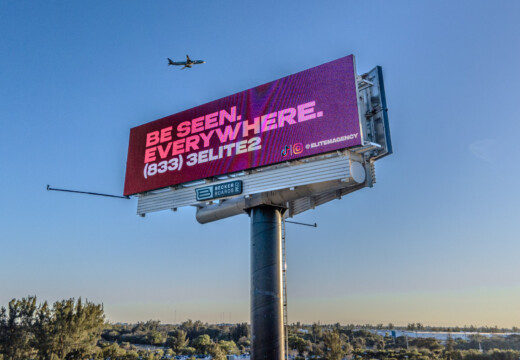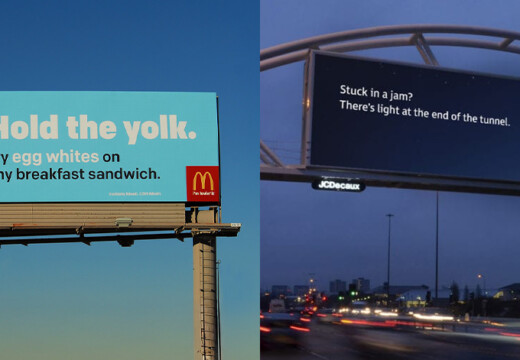Dayparting for billboards lets you show ads at specific times of the day to reach the right audience and save money. Instead of running ads 24/7, you can focus on times when people are most likely to see them, like during rush hours or lunch breaks. This is only possible with digital billboards, which allow precise scheduling and real-time updates.
Key Benefits:
- Target audience effectively: Match ads to traffic patterns.
- Save money: Pay only for high-impact time slots.
- Flexibility: Change ads or schedules anytime.
How It Works:
- Split the day into time slots:
- Morning (6 AM – 10 AM): Commuters heading to work.
- Midday (10 AM – 4 PM): Shoppers and business travelers.
- Evening (4 PM – 7 PM): People heading home.
- Night (7 PM – 6 AM): Night owls and entertainment seekers.
- Use platforms like Blip for scheduling, starting at $20/day.
- Track performance with real-time analytics to adjust your strategy.
| Feature | Digital Billboards | Static Billboards |
|---|---|---|
| Content Changes | Multiple times per day | Fixed for weeks/months |
| Timing Control | Precise scheduling | 24/7 display only |
| Cost Structure | Pay for specific time slots | Fixed rate for entire period |
Dayparting is a cost-effective way to make your ads more impactful. Start small, analyze results, and refine your strategy for better outcomes.
Core Concepts of Billboard Dayparting
Time Slot Basics
Digital billboard dayparting splits the day into specific time slots, each tailored to different audience habits and movements. These segments align with how people naturally travel and interact with their surroundings throughout the day:
- Morning Drive (6 AM – 10 AM): Designed to reach professionals and commuters heading to work or school.
- Midday (10 AM – 4 PM): Targets business travelers, shoppers, and individuals running errands.
- Evening Drive (4 PM – 7 PM): Focuses on commuters heading home after work.
- Night (7 PM – 6 AM): Aimed at entertainment seekers, night owls, and late-shift workers.
Breaking the day into these slots helps advertisers align their messaging with when their audience is most active.
Time-Based Audience Patterns
Traffic patterns play a huge role in how effective a billboard can be. People’s daily routines influence when and how they engage with ads. Matching your message to their schedule ensures it hits the right audience at just the right time.
| Time Period | Primary Audience | Typical Activities |
|---|---|---|
| Early Morning | Commuters | Traveling to work or school |
| Mid-Morning | Business Travelers | Attending meetings, deliveries |
| Lunch Hours | Local Consumers | Shopping, dining out |
| Late Afternoon | Commuters | Heading home, running errands |
| Evening | Entertainment Seekers | Going to restaurants, events |
These predictable patterns make it easier for advertisers to fine-tune their approach using advanced tools.
Dayparting Software Options
Modern technology has made dayparting easier than ever. Platforms like Blip offer advertisers tools to manage campaigns with precision. Blip’s self-serve system provides key features such as:
- Real-time bidding updates every 10 minutes
- Flexible scheduling, starting as low as $20 per day
- Detailed performance analytics
- Location-based targeting through an interactive marketplace
With an easy-to-use interface, advertisers can tweak their campaigns on the fly, ensuring their ads appear during the most impactful time slots. This kind of control allows businesses to stretch their budgets while achieving better visibility and engagement with their target audience.
Business Advantages of Dayparting
Timed Message Delivery
Dayparting ensures billboard messages are displayed when they’re most likely to resonate with the audience. By syncing ads with peak audience behaviors, businesses can capture attention at just the right moments. For example, a coffee shop could highlight its breakfast deals during morning commutes, while a restaurant might advertise dinner specials during evening rush hours. The timing makes all the difference in grabbing attention and driving action.
Cost Control Methods
Dayparting also helps businesses manage their advertising budgets more effectively by concentrating spending on time slots that deliver the best results. Here’s how it works:
| Time Period | Strategy | Outcome |
|---|---|---|
| Peak Hours | Higher bids | Greater visibility |
| Off-Peak | Lower bids | Broader reach |
| Mixed Schedule | Balanced spending | Well-rounded exposure |
This targeted approach ensures businesses get the most out of their budget, combining cost efficiency with impactful timing to drive results.
Real-Time Campaign Updates
One of the standout benefits of digital billboards is the ability to tweak campaigns in real time. This flexibility allows businesses to:
- Adjust schedules based on changing traffic patterns
- Allocate budgets more effectively across different time slots
- Adapt to external factors like weather, events, or performance insights
As one advertiser put it:
“Blip works for us. It’s a different medium, and it brings a lot of exposure. It sets us apart from the rest of the [competition], and that’s what I like”.
With budgets starting as low as $20 per day, advertisers can experiment with various time slots and refine their strategies using real performance data. This adaptability not only boosts campaign effectiveness but also ensures businesses remain in control of their spending.
Setting Up Dayparting Campaigns
Traffic Pattern Analysis
The foundation of successful dayparting lies in understanding traffic patterns to identify when your ads will make the biggest impact. Blip’s interactive marketplace makes this easier by providing detailed metrics on daily impressions and viewer behavior for each billboard location. This data helps advertisers pinpoint the most effective times to reach their audience.
Here’s a quick breakdown of traffic patterns and their advertising potential:
| Time Period | Traffic Characteristics | Best For |
|---|---|---|
| Morning Drive (6-10 AM) | High commuter volume | Breakfast spots, coffee, news apps |
| Midday (11 AM-2 PM) | Business and lunch traffic | Restaurants, retail stores |
| Evening Drive (4-7 PM) | Peak commuter volume | Entertainment, dining, services |
| Late Night (9 PM-12 AM) | Lower traffic, focused visibility | Nightlife, 24-hour services |
Time-Specific Ad Design
Designing ads that resonate with specific time slots is key to maximizing visibility and engagement. Here’s how to tailor your approach:
- Morning Slots: Use high-contrast designs to ensure visibility in changing light conditions. Keep messages short and straightforward – commuters don’t have time to read lengthy text.
- Afternoon Slots: Bright, vibrant colors work well under full daylight. Include clear calls-to-action that align with midday activities, like grabbing lunch or running errands.
- Evening Slots: Focus on designs that stand out in low-light settings. Simplified messaging and illuminated elements are ideal for tired commuters heading home.
Pair these designs with real-time tracking to ensure your campaign stays effective throughout the day.
Performance Tracking
Once your ads are tailored to specific time slots, tracking their performance is the next step. Real-time data plays a crucial role in fine-tuning your campaign. Ray Bowens, Founder of Hashtag-Vape, highlights the value of this approach:
“Billboards are one of the most impactful ways to advertise, and with Blip, you spend a fraction of what you would end up paying elsewhere”.
Here’s how to optimize your campaign:
- Use Blip’s analytics to monitor impressions and engagement for each time slot.
- Adjust bids every 10 minutes based on performance data.
- Compare results across different billboard locations and time periods.
- Refine your scheduling strategy using real-time insights.
With a starting daily budget of just $20, businesses can experiment with various dayparting strategies, analyze the results, and scale the ones that deliver the best outcomes. Blip’s built-in tools make it easy to measure effectiveness and fine-tune your ad spend for maximum impact.
sbb-itb-2e2e93f
What’s Next for Billboard Dayparting
New Dayparting Tools
Self-serve platforms are making dayparting easier than ever. New tools are emerging to simplify the process, including features like:
- Real-time bidding systems that update rates every 10 minutes based on market demand.
These advancements are paving the way for advertisers to navigate changes in data privacy and campaign flexibility with greater ease.
Rules and Privacy
As privacy regulations tighten, digital billboard platforms are adjusting to balance effective targeting with protecting consumer data. The focus is shifting toward using aggregated and anonymized data, which provides valuable audience insights without risking individual privacy. These changes are reshaping how advertisers think about and execute their targeting strategies.
Preparing for Changes
To stay ahead, businesses need to adapt to both regulatory and technological updates. Starting small – say, with a daily budget of $20 – can help companies test different strategies without overcommitting resources.
Here are some practical steps to get ready:
- Leverage automated bidding systems that update every 10 minutes for better cost control.
- Use analytics tools to monitor performance across various time slots.
- Create flexible ad content that works well across different dayparts.
- Design campaigns that can expand from local markets to reach regional audiences.
Summary
Main Points
Dayparting is changing the game for billboard advertising by allowing advertisers to deliver messages at the right time and optimize costs. The standout benefits include reaching specific audiences during high-traffic periods, leveraging dynamic pricing, and managing campaigns in real-time. By studying traffic data and designing ads tailored to specific time slots, advertisers can maximize their reach while staying within budget.
With these advantages in mind, starting your dayparting strategy is easier than you might think.
Getting Started
Getting started with dayparting is both straightforward and affordable. Follow these steps to kick off a time-targeted campaign:
- Sign up for free access to digital billboard inventory.
- Set a daily budget starting as low as $20 per day.
- Choose strategic locations based on traffic data.
- Create time-specific ads tailored to different parts of the day.
- Track performance using analytics tools.
A real-time bidding system updates every 10 minutes, giving you the flexibility to adjust your campaign based on current market conditions. With no minimum spending requirements or long-term commitments, experimenting with dayparting has never been more accessible.
To get the most out of your campaigns, prioritize:
- Studying traffic trends in your chosen locations.
- Designing ads that resonate with audiences at different times of the day.
- Using analytics to fine-tune your strategy.
- Adjusting bids based on the performance of specific time slots.
This method ensures better visibility and a competitive edge in the marketplace.
How you can use Dayparting to optimize your advertising🚀
FAQs
What is dayparting, and how can it make my billboard advertising more effective?
Dayparting involves timing your billboard ads to show during specific hours or days when your audience is most likely to notice them. Think morning rush hours or those busy weekend shopping times – these are the moments when your ads can make the biggest splash.
This approach helps you use your advertising dollars wisely by focusing on key times that truly matter. Platforms like Blip make it simple to tailor your ad schedule to fit your audience’s routines, allowing you to get more out of your campaign without stretching your budget thin.
What should I keep in mind when choosing time slots for my digital billboard ads?
When choosing time slots for your digital billboard ads, it’s crucial to think about your audience’s daily routines and when they’re most likely to notice your message. For instance, targeting peak commute hours can be effective for reaching drivers, while lunchtime might be ideal for promoting restaurants, and evenings work well for entertainment-related ads.
You should also match your time slots to your campaign goals and budget. Platforms like Blip let you tweak your schedule and fine-tune ad placements based on performance, helping you make the most of your advertising spend.
How do real-time bidding and analytics make dayparting more flexible and cost-effective?
Real-time bidding happens every 10 minutes, ensuring that your billboard ads are priced competitively. This dynamic system lets you tweak your campaigns based on demand and budget, giving you more control and adaptability.
Analytics are a crucial part of the process, offering valuable insights into how your campaign is performing. By monitoring metrics like impressions and engagement, you can fine-tune your dayparting strategy to reach the right audience at the perfect time. This helps you get the most out of your investment while keeping your spending in check.
Related posts
- How to Set Up Automated Ad Scheduling
- Day vs. Night Billboard Design: Key Differences
- How Digital Billboards Target Local Audiences
Dayparting involves timing your billboard ads to show during specific hours or days when your audience is most likely to notice them. Think morning rush hours or those busy weekend shopping times - these are the moments when your ads can make the biggest splash.
This approach helps you use your advertising dollars wisely by focusing on key times that truly matter. Platforms like Blip make it simple to tailor your ad schedule to fit your audience's routines, allowing you to get more out of your campaign without stretching your budget thin.
"}},{"@type":"Question","name":"What should I keep in mind when choosing time slots for my digital billboard ads?","acceptedAnswer":{"@type":"Answer","text":"
When choosing time slots for your digital billboard ads, it’s crucial to think about your audience’s daily routines and when they’re most likely to notice your message. For instance, targeting peak commute hours can be effective for reaching drivers, while lunchtime might be ideal for promoting restaurants, and evenings work well for entertainment-related ads.
You should also match your time slots to your campaign goals and budget. Platforms like Blip let you tweak your schedule and fine-tune ad placements based on performance, helping you make the most of your advertising spend.
"}},{"@type":"Question","name":"How do real-time bidding and analytics make dayparting more flexible and cost-effective?","acceptedAnswer":{"@type":"Answer","text":"
Real-time bidding happens every 10 minutes, ensuring that your billboard ads are priced competitively. This dynamic system lets you tweak your campaigns based on demand and budget, giving you more control and adaptability.
Analytics are a crucial part of the process, offering valuable insights into how your campaign is performing. By monitoring metrics like impressions and engagement, you can fine-tune your dayparting strategy to reach the right audience at the perfect time. This helps you get the most out of your investment while keeping your spending in check.
"}}]}


